Stress
4 Scents to Help You De-Stress and Lift Your Spirits
Breathe deeply and smell the rain: citrus, pine, lavender, and frankincense.
Posted December 17, 2023 Reviewed by Jessica Schrader
Key points
- You can find some common scents that de-stress in your kitchen and outdoors, like citrus and pine.
- Fragrances can de-stress by triggering the brain's relaxation response and by reminding you of pleasant times.
- The scent of rain contains many essential oils that de-stress and can help heal.
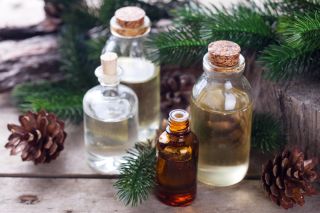
If you're feeling stressed or down at holiday time, take a moment to breathe in the scent of rain. Can't step outside into a forest? No worries, you can find these scents all around you in your home. There's citrus in the kitchen and, if you decorate with pine or fir tree boughs, the forest scents may be in your living room or hanging on your front door. I have an old pine chest of drawers that reminds me of childhood road trips in the mountains of Vermont and New Hampshire.
Now close your eyes and imagine yourself taking a quiet stroll through a forest. You may be able to conjure the smell of rain wafting up your nostrils. All animals, including insects and mammals, are attracted to that scent, and of course, we humans love it too. This is because plants release hundreds of chemicals, dissolved in oils, onto their leaves, twigs, branches, bark, petals, and stems, and when the air gets moist, the chemicals in the oils dissolve in the water droplets, which waft into the air and swirl around in the wind. If you happen to be in their path and inhale deeply, they signal your brain to relax and calm.

Scientists have studied the chemical content of the plants in the Shinrin-yoku parks in Japan and Korea and in the saguaro cactus forests of the Sonoran Desert in Arizona, and even though the desert and forest scents differ, hundreds of similar chemicals were found in these far-flung places. These are “biogenic volatile organic compounds,” which means they come from plants (biogenic), evaporate easily (volatile), and are mainly made up of carbon molecules stuck together (organic). In Korea and Japan, these fragrant oils come mostly from a specific kind of cypress tree—the Hinoki cypress. In the desert, they emanate from creosote bushes and many other desert plants.
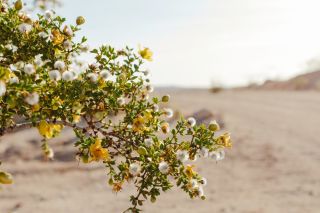
One scientist at the University of Arizona, Gary Nabhan—who in 1990 received the MacArthur Fellowship – the so-called “Genius Grant,” studies the smell of rain in the Sonoran Desert. He likens the combination of hundreds of chemical oils released before, during, and after a rain to an “orchestra” of fragrances. This blend also bears similarities to the taste of fine wines or the scent of perfumes—with high and low notes, both shorter and longer lasting.
We don’t know exactly why plants release this symphony just before it rains, but it may be to attract the pollinators, who then flit from plant to plant, dislodging seeds that have the greatest likelihood of germinating when the raindrops fall. Out of those hundreds of different oils, there are a few that seem to have the most benefits for health: limonene, camphene, myrcene, and pinene. As their names imply, these oils evoke the familiar fragrances of lemon, camphor, myrrh, and pine. They are emitted by plants including evergreens, lavender, citrus trees, and the creosote-bush.
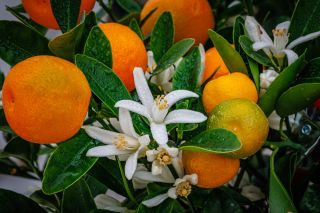
As you meander on a forest path, those fragrant oils envelop you: the fresh scent of pine or spruce; the warm, dry smell of earth; perhaps the chamomile, lavender, or clover fragrances of meadow flowers, which call to bees and butterflies and throw off their scent as you pass. If you are in a warmer climate, the scents of jasmine, orange blossoms, or eucalyptus perfume the evening air.
After a rain in the high Sonoran Desert, the sweet scent of the creosote bush fills your nostrils and brings about a sense of calm. When I first visited Tucson during the monsoon season, I asked my hosts what I was smelling when I stepped outside, as it was unlike any other fragrance I had ever smelled. I then heard stories of native Tucsonans who had moved elsewhere and so missed that scent that they took a sprig of creosote bush back to their new home and hung it in the shower!
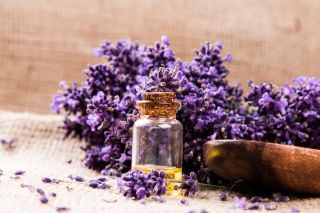
These fragrances have been shown to have many health benefits, including improving moods, reducing anxiety, lowering blood pressure, reducing pain, and improving sleep. They reduce the stress response in several ways. When inhaled, the chemicals have a direct calming effect because nerve endings in the nose are the shortest direct pathway to the brain (in fact, that’s how inhaling any drug, medicinal or otherwise, can so quickly affect brain function and mood). As you inhale deeply, you engage your vagus nerve and trigger your relaxation response. Some fragrant oils, such as lavender, can even make a rat drift into slow-wave sleep. Smells also trigger memories. If the scent of evergreen reminds you of a happy Christmas morning of your childhood, the memory will immediately trigger those feel-good brain regions and anti-pain pathways that in turn reduce your stress response.

Some fragrances also have beneficial effects on the immune system. Frankincense was prized by the ancient Romans and peoples of the Bible for healing wounds and protecting against infection—so much so that Roman legionnaires carried chunks of frankincense resin when they went into battle. Bathsheba famously gave King Solomon a gift of the bushes that produce frankincense resin, and frankincense and myrrh were two of the gifts of the magi to the baby Jesus. It seems that these ancients were on to something, since recent studies show that they reduce inflammation, kill bacteria and fungi, and directly affect immune cells.
Of course, the busyness of modern life rarely leaves us with hours to spend meandering in the forest. So how do you bring the healing benefits of forests into your home or workspace? The hospitality industry has long used fragrances to evoke a pine forest or an ocean beach to immediately relax all who enter their resorts. But beware of synthetic chemicals diffused into the air, which may not have the same benefits as the naturally occurring ones and can actually be harmful, triggering allergic reactions and worse. The intricate chemistry of the natural compounds often makes them difficult to replicate with enough precision to produce their health benefits. But this is what aromatherapy is all about, and an integrative medicine practitioner can help you choose which essential oils are best for you.
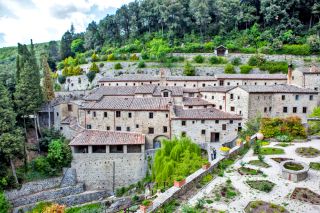
The best way to gain the benefits of the forest is by going out into green spaces, even if only a nearby park. In fact, Gary Nabhan is creating desert fragrance gardens around Tucson and Southern Arizona, inspired by an experience he had in Assisi, Italy. Nabhan had been suffering from chronic fatigue and personal setbacks and went on a pilgrimage from Florence to Assisi. During the twelve-day walk, he found the beauty of his surroundings so healing that he was inspired to re-create them by designing a garden on Tumamoc Hill—a sacred hill in Tucson. In fact, Nabhan was so drawn to St. Francis’s appreciation of nature that he joined the order as an ecumenical brother—Brother Coyote, they called him when he was ordained. One of the places that inspired Nabhan’s own love of nature was Le Celle, a mountain monastery near Cortona, Italy, where St. Francis first found peace. If you visit, you can still see the monks tending their herb gardens. As they lovingly water the plants, the scent of herbs envelops you, adding another sensory element to the quiet calm.
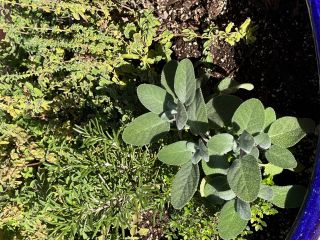
If you don’t have revered sites in your own city, you may be able to carve out your own little sacred space, even if it is just your own herb garden. I grow oregano, basil, rosemary, and thyme in pots on my patio, and whenever I water them and get a whiff of their fragrances, it reminds me of the monks I saw at Le Celle watering their herb gardens and it brings me peace. If you don’t have a deck, patio, or balcony where you can grow herbs, you can place a tiny potted herb plant or two on your desk or in your kitchen and find serenity.
So, if the rush and tumble of the season is stressing you out, and your holiday tradition includes decorating a fir tree in your living room or festooning your home with live evergreen garlands and wreaths, breathe in their scents—as long as you are not allergic. Even if that’s not your tradition, take a few moments to stop and breathe deeply, and inhale the scents that bring you peace.
References
Excerpted and condensed from Sternberg, E.M. (2023) Well at Work: Creating Wellbeing in Any Workspace Little, Brown Spark NY.
Antonelli, M., Donelli, D., Barbieri, G., Valussi, M., Maggini, V., & Firenzuoli, F. (2020). Forest volatile organic compounds and their effects on human health: A state-of-the-art review. International Journal of Environmental Research and Public Health, 17(18), 6506.
Kotera, Y., Richardson, M., & Sheffield, D. (2020). Effects of shinrin-yoku (forest bathing) and nature therapy on mental health: A systematic review and meta-analysis. International journal of mental health and addiction, 1-25.
Nabhan, G. P., Daugherty, E., & Hartung, T. (2022). Health Benefits of the Diverse Volatile Oils in Native Plants of Ancient Ironwood-Giant Cactus Forests of the Sonoran Desert: An Adaptation to Climate Change?. International Journal of Environmental Research and Public Health, 19(6), 3250.




